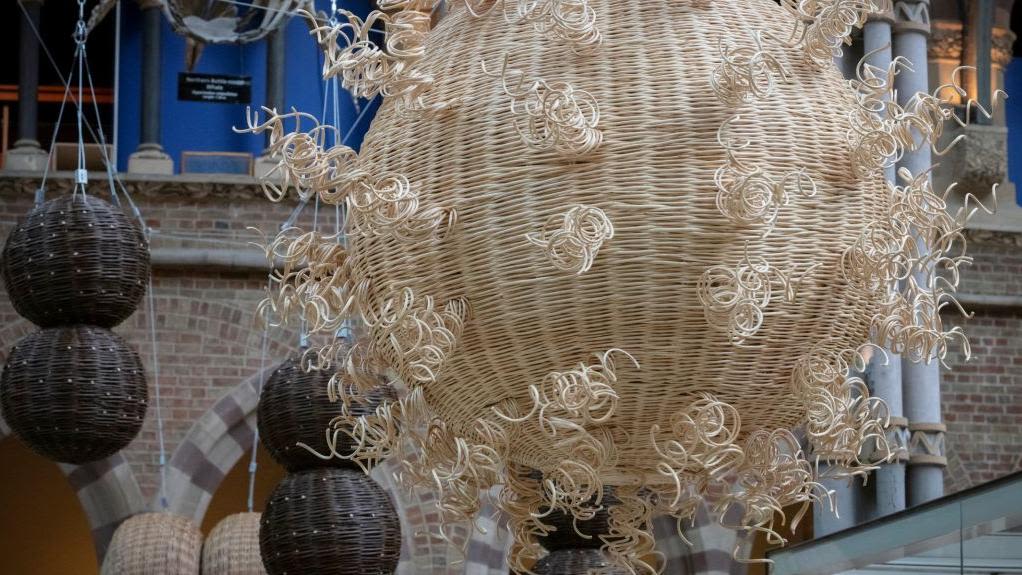

The installation was commissioned to mark the 30th anniversary of the Oxford Vaccine Group which was established in 1994, and set out to provide scientific research into the development and implementation of vaccines, in particular diseases for which there were at the time no effective vaccines.
The installation consists of six, three-dimensional sculptures woven in English willow, representing different diseases for which OVG has developed a vaccine: pneumonia, meningitis, typhoid, Covid, malaria and Ebola. Five of these will be suspended in the central room of the Museum, within the How Evolution Works gallery, with the sixth – a 2.4m long representation of Ebola weighing 75kg – lying at floor level.
‘For 30 years, OVG has been working at the forefront of vaccine research in the fight against these diseases and many others, saving millions of lives, and helping people of all ages live longer, happier and healthier lives,’ says Professor Pollard, Director of the Oxford Vaccine Group, ‘and it is really exciting to see Angela bring this to life in her artwork.’
more recommended stories
 Circadian Control of Neutrophils in Myocardial Infarction
Circadian Control of Neutrophils in Myocardial InfarctionKey Takeaways for HCPs Neutrophil activity.
 E-Cigarette Use and Heart Attack Risk in Former Smokers
E-Cigarette Use and Heart Attack Risk in Former SmokersKey Takeaways for Clinicians and Nurses.
 36-Week Pre-eclampsia Screening May Reduce Term Risk
36-Week Pre-eclampsia Screening May Reduce Term RiskA New Preventive Strategy for Term.
 Cardiovascular Risk and Sudden Cardiac Death in Diabetes
Cardiovascular Risk and Sudden Cardiac Death in DiabetesRising Sudden Cardiac Death (SCD) Risk.
 Poor Kidney Function and Alzheimer’s Biomarkers Explained
Poor Kidney Function and Alzheimer’s Biomarkers ExplainedPoor kidney function may influence levels.
 Walking Speed Before Hip Replacement Predicts Recovery
Walking Speed Before Hip Replacement Predicts RecoveryNew Evidence Points to a Simple,.
 Neuroblastoma Drug Combo Extends Survival in Models
Neuroblastoma Drug Combo Extends Survival in ModelsA Promising Shift in High-Risk Neuroblastoma.
 How Soybean Oil Impacts Weight Gain and Metabolism
How Soybean Oil Impacts Weight Gain and MetabolismWhy Soybean Oil May Affect Metabolism.
 Coffee and Cognitive Function: Evidence Review
Coffee and Cognitive Function: Evidence ReviewA new narrative review in Cureus.
 Colorectal Cancer Screening Rates Low in Adults 45–49
Colorectal Cancer Screening Rates Low in Adults 45–49Recent UCLA research reveals that colorectal.

Leave a Comment